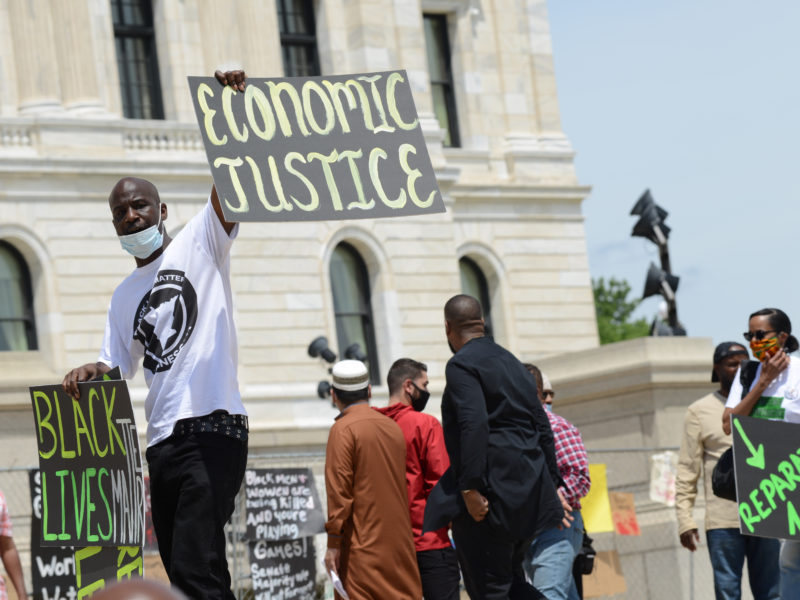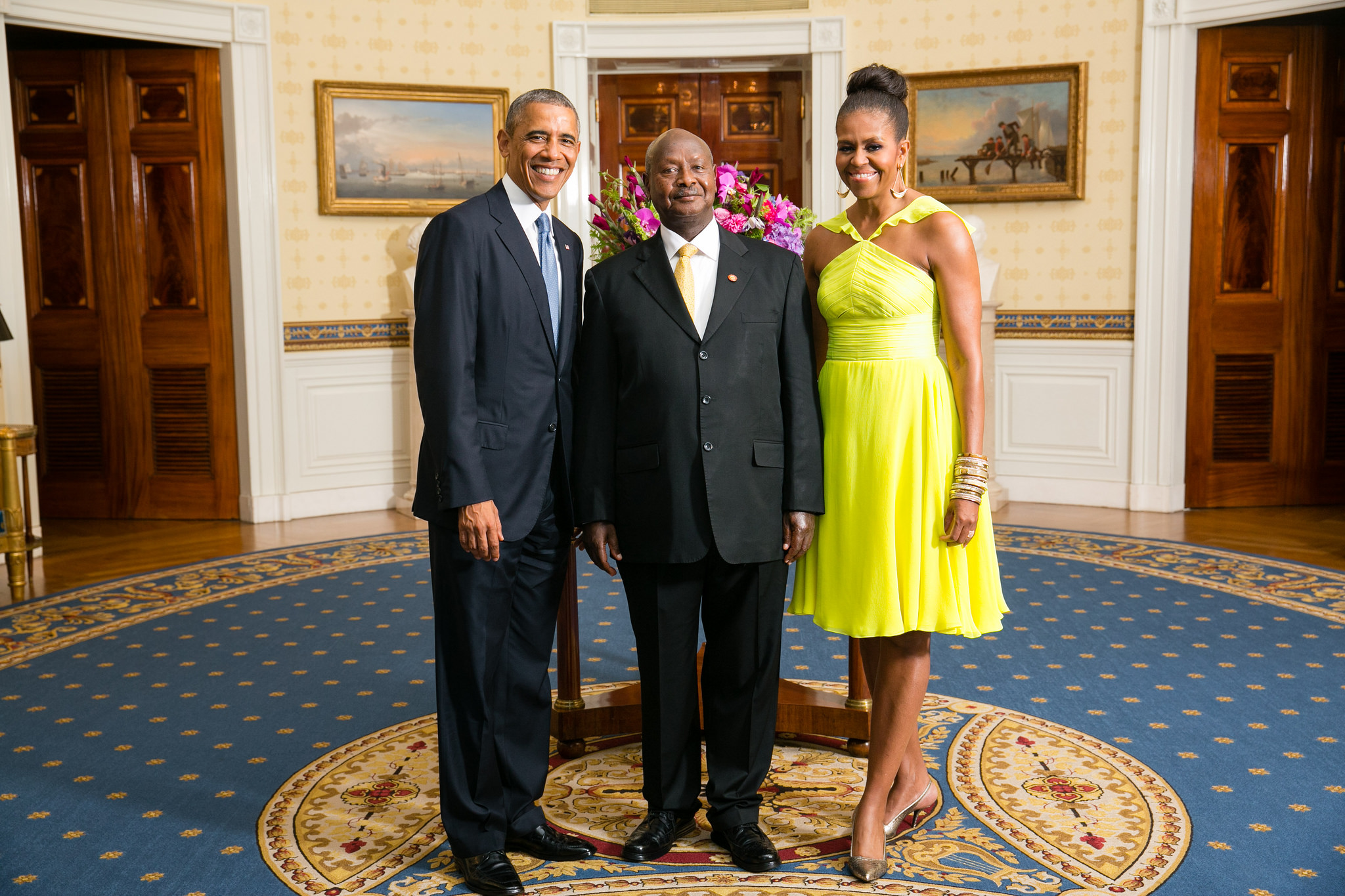Guest post by Elsa Voytas
On June 19, 2020 (Juneteenth), protesters from Minnesota to Louisiana chanted “Reparations Now” and “cut the check.” These protesters link current injustices, such as police violence against Black Americans, to the legacy of slavery. While recent events have captured the nation’s attention, the racial disparities they expose extend to a discriminatory and violent past never appropriately addressed.
Instead, inequities are reproduced generation after generation. Black Americans earn less and are more likely to live in high poverty neighborhoods; are more vulnerable to COVID-19; and are disproportionately targeted by police violence compared to their white counterparts.
But the desire for change is real. The Black Lives Matter movement has achieved record levels of support, and donations to racial justice groups have surged, with over $250 million donated to progressive causes in just over two weeks.
How will the current movement, and the activists leading it, translate this momentum from a critique of the status quo to durable policy change? As the conversation shifts to discussion of new policies, including police reform or abolition, reparations for descendants of enslaved Africans have received renewed attention by the media and politicians. Several politicians have incorporated the policy into their campaign platforms. As elections draw nearer, the conversation will likely continue.
Many Americans have questions about the policy of reparations. Who would receive reparations? And what would the result be? These questions are difficult to answer, but other contexts offer insights.
From other countries’ experiences with compensation, several things seem clear. First, while compensation does not fully correct past injustice, it is a tangible form of state recognition of wrongs. Implementing a policy of reparation signals a shift away from previous discriminatory policies and an effort to work toward atonement. Second, compensation can shape recipients’ feelings toward the government and their desire to participate politically.
My research in post-repression Chile supports these claims. Over 40,000 surviving victims and relatives of deceased victims from the Pinochet dictatorship (1972-1990) are eligible to receive reparations. According to my findings, recipients of reparations view the policy as incomplete but important. Though no amount of money can make things right, reparations show a break from past state policies and an effort to atone for them. And in Chile, this motivates recipients to engage politically, by registering to vote. Recipients are up to 10 percent more likely to register to vote than those who have not yet been compensated.
So how did reparations work in Chile? They were embedded within a larger set of transitional justice policies and a broader strategy for addressing legacies of political violence. The government implemented truth commissions with input from victims’ organizations. The truth commissions clearly defined their target audiences. Surviving victims and family members of those killed during the military dictatorship testified before these commissions, in turn making them eligible to receive payments. Not only could victims receive material reparations, they were guaranteed healthcare—including mental health. Descendants of victims were granted scholarships to attend universities and were exempted from military service.
Of course, reparations are not a panacea. In Chile and beyond, recipients are quick to note their shortcomings. Respondents in Chile noted that reparations are an incomplete response to the past. This is consistent with findings from a team of researchers in Colombia that two-thirds of compensated victims do not feel that payments provide justice.
More than a failure of reparations, however, these sentiments suggest that responses to violent legacies must be broader. In Chile, reparations took place alongside other entirely different policies—trials against perpetrators and the establishment of museums and memorials remembering victims. These policies helped to address other aspects of the past. Even still, debates continue. During interviews, many suggested that institutional change and educational initiatives for younger generations were still needed. Mass mobilizations in 2019, demanded that the constitution, which was written and instated by Pinochet, be rewritten. Remembrance and justice-seeking is a process.
The United States’ past is different than Chile’s. In the US, histories of racial repression, violence, and inequities extend far longer. The opportunity for swift redress to direct victims—despite promises of “40 acres and a mule” soon after emancipation—has long since passed.
But the US does have a history of offering official apologies and providing compensation, even decades after violence itself has ceased. In 1988, Japanese-Americans successfully fought for a formal apology and a $20,000 check for each of the 80,000 living survivors of internment during WWII. Though reparations for African Americans pose unique logistical challenges—including identifying recipients and funding payments—it can be done. Other countries have overcome obstacles to successfully enact policies on a broader scale. Germany and other partners, from 2000 to 2007—some 60 years after WWII—provided reparations to 1.66 million Holocaust victims and descendants as part of their effort to right a moral wrong. In the past few months, Congress was able to quickly provide $2.2 trillion to help those struggling as a result of the pandemic, suggesting it has the capacity to fund and organize large-scale stimulus packages in other contexts.
In the US, policymakers and scholars have begun to think about how reparations could work here. Reparations could be administered at both an individual and a collective level and address structural barriers to education, homeownership, and business start-ups. Lineage could be determined by a combination of birth records, census records, and DNA testing. Compensation could be embedded within or accompanied by a broader truth commission, like in Chile.
Though the context and design of reparations in the US would necessarily deviate from Chile and Germany, their symbolic value would persist. The effort to establish a working reparations policy, despite logistical hurdles—including taking a critical look at symbols and monuments and reforming discriminatory policies—signals commitment to acknowledging injustices of the past. Efforts to develop and implement reparations can help develop more positive relationships between the state and historically subjugated groups. History doesn’t have to repeat itself.
Elsa Voytas is a PhD candidate at Princeton University in the fields of comparative politics, empirical methods, and international relations with a joint degree in Social Policy from the Princeton School of Public and International Affairs.







